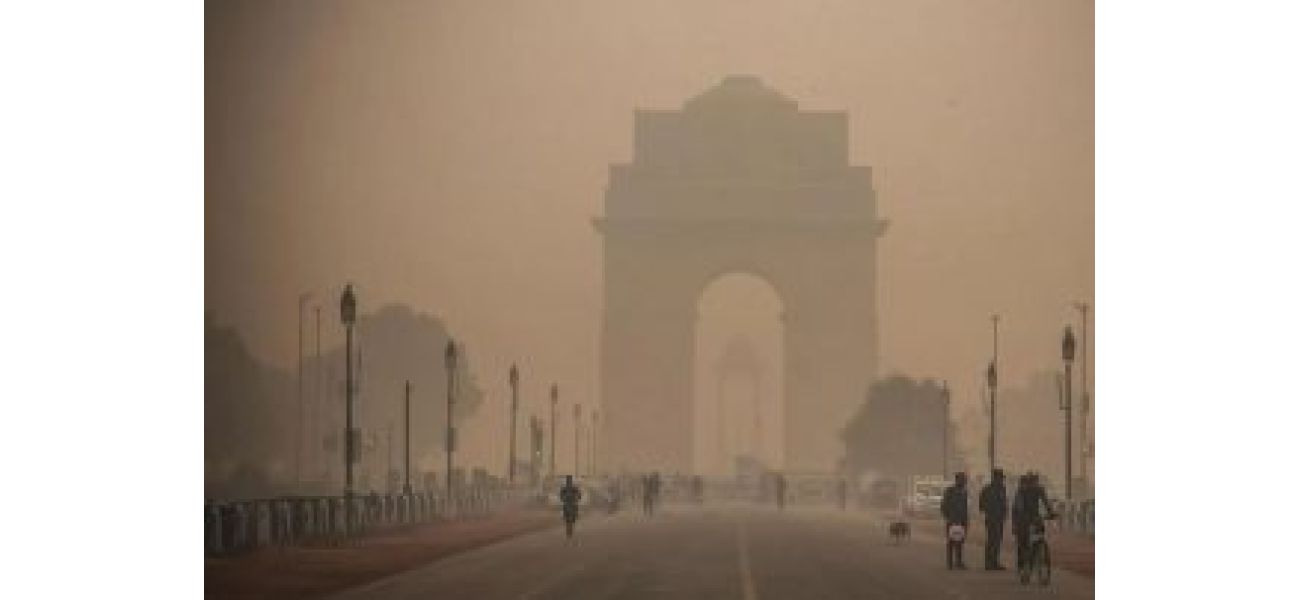Majority of Delhi-NCR residents suffer from burning eyes and headaches due to low air quality.
A survey by LocalCircles found that 75% of households in Delhi-NCR are suffering from health issues due to high levels of pollution, with symptoms such as sore throat, cough, and headaches reported. PM 2.5 levels after Diwali reached 488 micrograms per cubic metre.
October 25th 2025.

A recent survey conducted by LocalCircles has revealed some alarming news for the residents of Delhi-NCR. It was found that a whopping 75% of households are currently experiencing negative health effects due to the toxic air in the region. This includes symptoms such as sore throat, cough, burning eyes, headaches, and even sleep disturbances. The situation has become even more concerning after an analysis of data from the Central Pollution Control Board (CPCB) showed a significant increase in PM 2.5 levels post-Diwali. These levels have reached a staggering 488 micrograms per cubic metre, which is the highest in the past five years and more than three times the pre-festival level of 156.6 micrograms per cubic metre. The pollution levels were at their peak during the Diwali night of October 20 and the following morning.
The survey, which received over 44,000 responses from residents across Delhi, Gurugram, Noida, Faridabad, and Ghaziabad, also highlighted that 42% of households have reported at least one family member suffering from a sore throat or cough. Additionally, 25% of respondents stated that their family members had burning eyes, headaches, or difficulty sleeping. Breathing difficulties and aggravated asthma were also reported by 17% of the participants.
In response to this alarming situation, 44% of households have taken measures to minimize their exposure to outdoor pollution. This includes increasing their intake of immunity-boosting foods and drinks. Furthermore, nearly one-third of the respondents have either consulted or planned to consult a doctor for pollution-related ailments.
Despite a significant reduction of 77.5% in stubble burning events in Punjab and Haryana, the air quality in Delhi remains poor. The Air Quality Index (AQI) has crossed 400 in several areas, which is 24 times higher than the World Health Organization's recommended level for PM2.5 exposure. LocalCircles has emphasized the need for strict implementation of anti-pollution measures, such as the Graded Response Action Plan, which includes the use of smog guns and night-time sweeping to reduce dust.
According to data from the Central Pollution Control Board, Delhi's overall AQI on Saturday morning was in the "poor" category at 261, which was a slight improvement from the previous day's 290. However, the situation in Anand Vihar was classified as "severe" with an AQI of 415, which was the highest among all monitoring stations.
In conclusion, the survey conducted by LocalCircles has shed light on the severe impact of toxic air on the residents of Delhi-NCR. It is crucial for the authorities to take urgent action to improve the air quality and safeguard the health of the citizens. Otherwise, the situation will only continue to worsen, causing more harm to the people. Let us hope that the necessary steps are taken promptly to address this pressing issue.
The survey, which received over 44,000 responses from residents across Delhi, Gurugram, Noida, Faridabad, and Ghaziabad, also highlighted that 42% of households have reported at least one family member suffering from a sore throat or cough. Additionally, 25% of respondents stated that their family members had burning eyes, headaches, or difficulty sleeping. Breathing difficulties and aggravated asthma were also reported by 17% of the participants.
In response to this alarming situation, 44% of households have taken measures to minimize their exposure to outdoor pollution. This includes increasing their intake of immunity-boosting foods and drinks. Furthermore, nearly one-third of the respondents have either consulted or planned to consult a doctor for pollution-related ailments.
Despite a significant reduction of 77.5% in stubble burning events in Punjab and Haryana, the air quality in Delhi remains poor. The Air Quality Index (AQI) has crossed 400 in several areas, which is 24 times higher than the World Health Organization's recommended level for PM2.5 exposure. LocalCircles has emphasized the need for strict implementation of anti-pollution measures, such as the Graded Response Action Plan, which includes the use of smog guns and night-time sweeping to reduce dust.
According to data from the Central Pollution Control Board, Delhi's overall AQI on Saturday morning was in the "poor" category at 261, which was a slight improvement from the previous day's 290. However, the situation in Anand Vihar was classified as "severe" with an AQI of 415, which was the highest among all monitoring stations.
In conclusion, the survey conducted by LocalCircles has shed light on the severe impact of toxic air on the residents of Delhi-NCR. It is crucial for the authorities to take urgent action to improve the air quality and safeguard the health of the citizens. Otherwise, the situation will only continue to worsen, causing more harm to the people. Let us hope that the necessary steps are taken promptly to address this pressing issue.
[This article has been trending online recently and has been generated with AI. Your feed is customized.]
[Generative AI is experimental.]
0
0
Submit Comment





